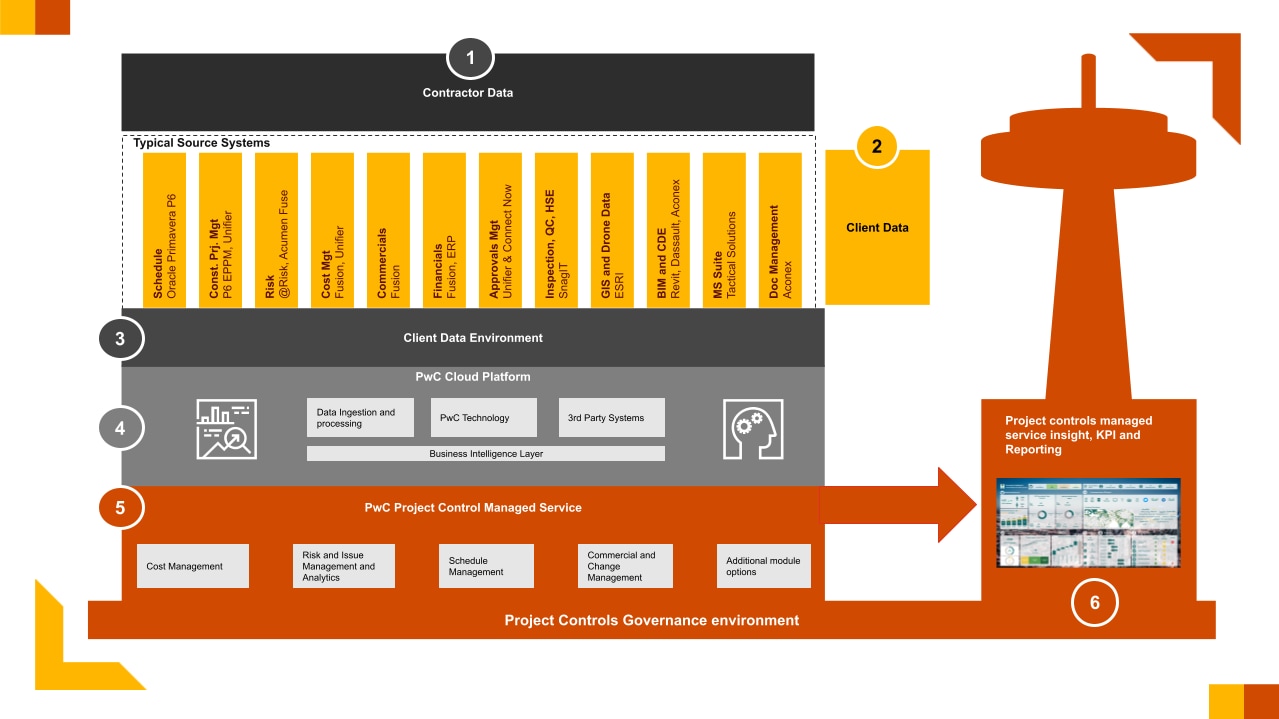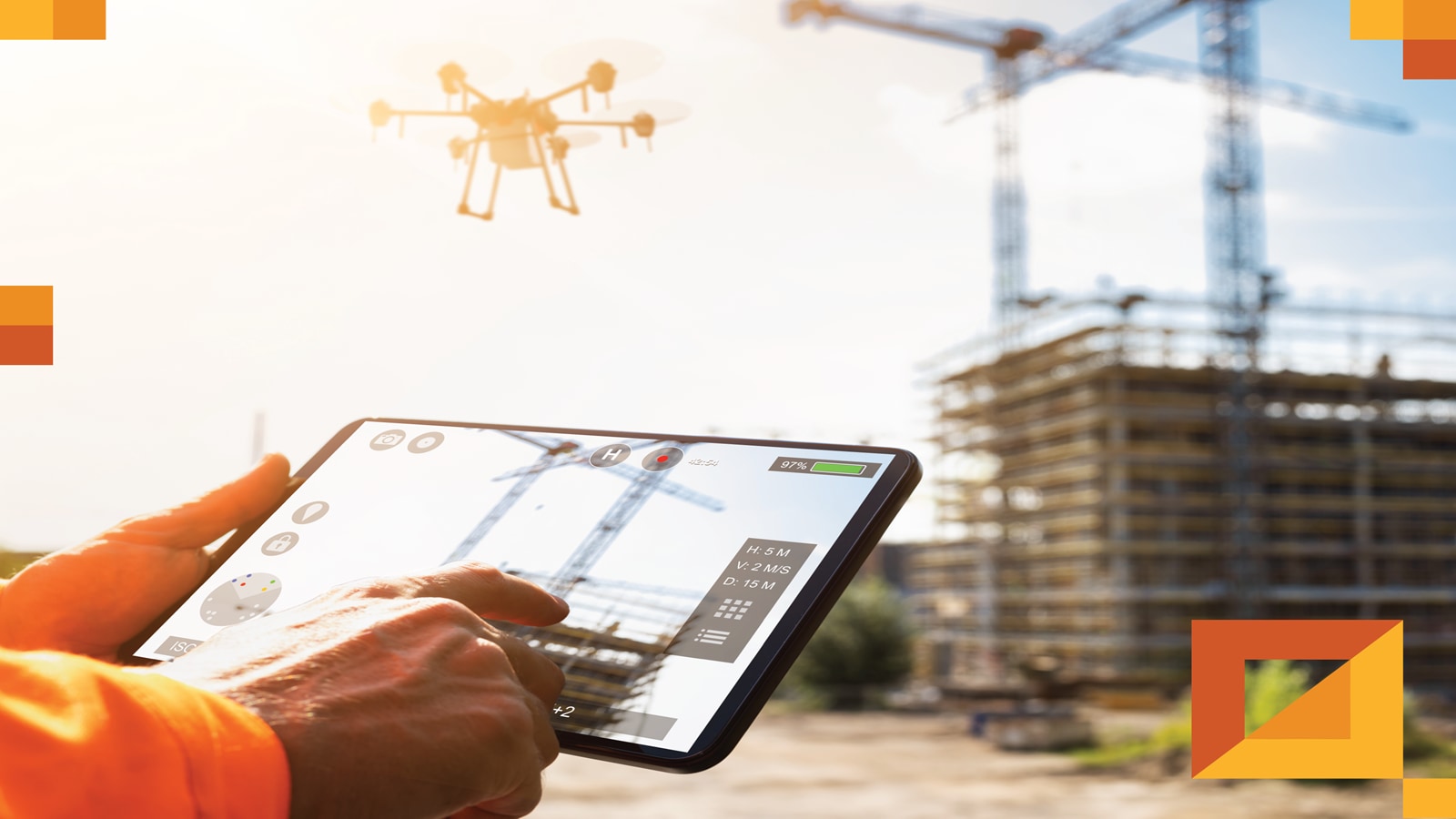
In the first of our five-part blog series, we discussed ongoing challenges in delivering large-scale projects in our region and how our new project controls managed services can help. These challenges were highlighted in our 2022 Capital Projects & Infrastructure survey, and we explained why a different approach to project controls is needed.
The survey had also revealed that most leaders believed technology could solve many of the challenges they faced. Since then, the pace of change has increased exponentially with the proliferation of Generative Artificial Intelligence (Gen-AI) and other AI-based tools and capabilities.
Part 2: Tech powered, underpinned by AI and advanced analytics
An opportunity now exists like never before to truly leverage the vast quantities of data generated on a complex capital project to generate genuinely forward looking analytics and insights. Fresh thinking and an open mind to adopting the suitable technology as part of a managed service will be key to harnessing its power.
Weaving AI into Capital Projects -
Select the optimal technology stack. Most organisations have a diverse system ecosystem, which requires selecting a technology stack that allows seamless integration. This choice becomes even more critical when considering the unique challenges posed by data residency and security requirements, which vary significantly across jurisdictions. A well-selected technology stack not only facilitates smoother operations but also ensures compliance with these regulatory demands. Furthermore, the rapid advancement in technology means that what is considered cutting-edge today may be outdated tomorrow. Therefore, it is essential to select a technology stack that is not only compatible with current systems but is also adaptable and scalable to future technological developments and business needs. Expert guidance in this selection process can prove invaluable, helping organisations navigate the complex landscape of available technologies to find those that best meet their specific requirements.
When selecting the optimal technology stack for integrating complex system ecosystems within organisations, it's essential to consider several technical aspects that ensure seamless functionality and future-proofing such as:
- Interoperability
- Security and compliance
- Scalability
- Serverless and microservices based architecture
- Consolidate data through a centralised data lake. The consolidation of data into a centralised data lake is a strategic move that enables organisations to harness the full potential of their information assets. By bringing together structured and unstructured data from various sources, a data lake provides a comprehensive view of an organisation's data landscape. This holistic perspective is crucial for advanced analytics and gaining actionable insights. Additionally, a centralised data lake facilitates the maintenance and governance of data, ensuring its quality, security, and accessibility. It serves as a foundational component for building advanced data pipelines that feed into machine learning models and analytical tools. A key aspect of a successful data lake is its architecture. It should be designed by considering the future-state of your organisation and leverage distributed storage solutions such as Hadoop Distributed File System or cloud-based storage solutions.
- Manage data with data warehouses and data marts. After consolidating your data, the next step will be to use data pipelines and ETL processes to select, transform, structure and transition data into data warehouses for historical data analysis to provide business intelligence and management information. For large organisations, data warehouses can be further segregated into data marts for departmental level reporting.
- Make informed decisions with advanced analytics. Data warehouses and data marts are great in reporting on lagging indicators, but they are only beneficial to a certain extent. To get true insights, AI, and predictive models must be built for organisations to make informed decisions on leading indicators. By leveraging the data lake’s ability to store large volumes of disparate data, intuitive machine learning models can be developed and trained to allow organisations to go from answering ‘Why did it happen?’ to ‘What will happen?’ and eventually to ‘How do I get a better outcome?’
- Create a properly defined project controls framework. Project controls encompass a combination of systems, processes, and tools that enable project managers to understand, predict and have better control of the projects’ performance. Without a proper framework and governance, organisations struggle to realise the benefits of the technology implemented. We have seen multiple clients struggle to provide intelligent insights from sophisticated technology solutions due to the lack of well-defined performance management processes.
How managed services can help accelerate and deliver sustainable outcomes?
Giga projects, due to their scale and complexity, require advanced project management and project controls techniques, where Capital Project Controls Managed Services can contribute significantly. At PwC Middle East, we have delivered all of the above across a number of projects in KSA. We’ve set out our project controls managed services solution architecture below. Our solution leverages our technology and that of our alliance partners to provide a structured and phased approach to project controls analytics.

In order to bring the transformational change to project controls it is imperative to have a well thought out and planned approach. As part of our managed services solution:
We break down data silos and consolidate data;
We define a proper data strategy to deliver tangible benefits, such as having a trusted source of truth.
We create a phased approach to data that involves data governance, fit-for-purpose data models and data architecture, processes efficiencies and, most importantly, insightful visualisations.
We leverage technology solutions from our technology partners grounded with a robust knowledge of ‘best fit’ solutions to client challenges.
We integrate advanced AI and machine learning algorithms to analyse data patterns through predictive analytics, ultimately leveraging GenAI for enhanced data-driven decision-making that can foresee potential delays, cost overruns, and resource bottlenecks before they become critical issues.
This proactive approach allows project managers to make informed decisions, optimise resource allocation, and implement corrective actions in real-time, significantly improving project efficiency and success rates.
Next in our blog series we’ll be providing more insights and further details about:
Part 3: Human-led with the right talent deployed efficiently and effectively;
Part 4: Supported by trusted alliances
Part 5: Outcome not input focused operating model.
Related content










